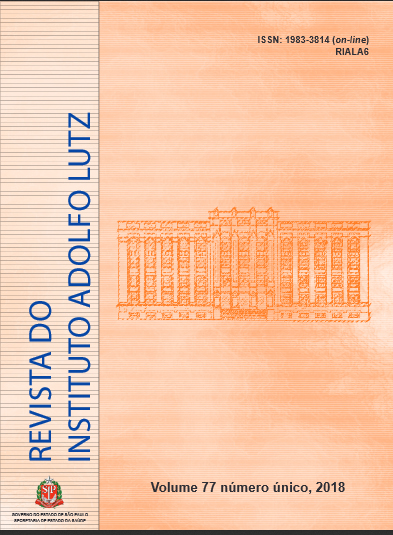Abstract
The territory located in the border of Argentina, Brazil and Paraguay is endemic for tegumentary leishmaniasis (TL). However, Lutzomyia longipalpis first report in the area was in 2010-Argentina, in 2012-Brazil, and no records in the Paraguayan border despite of reports of human visceral leishmaniasis (VL) cases. Therefore, we developed a research from 2014 to 2017 to study VL in the three-country border at locality level; Uruguay-2015, and Bolivia-2016 joined latter due to the alerts of VL in the Argentinean borders. The space-time distributions of vectors, infected dogs and environmental variables were recorded and associated at three progressive scales, while anthropological surveys were performed. Three scenarios were characterized based on canine VL prevalence, vector presence-abundance and the spatial distribution consistency between them: settled VL, incipient VL, and steady TL with imported canine VL. The vector abundance was clustered in ‘hot spots’ persistent in time that could act as ‘source populations’. The clustering distribution was associated with environmental variables at the different scales studied. Therefore, the vector distribution (proxy of human-dog exposure) could be modeled in recent southern scenarios to focus the surveillance and interventions on predicted ‘hot spots’, in order to increase the effectiveness and efficiency of program activities.
References
1. Harhay MO, Olliaro PL, Costa DL, Costa CH. Urban parasitology: visceral leishmaniasis in Brazil. Trends Parasitol. 2011;27(9):403-9. https://dx.doi.org/10.1016/j.pt.2011.04.001
2. Salomón OD, Feliciangeli MD, Quintana MG, Afonso MM, Rangel EF. Lutzomyia longipalpis urbanisation and control. Mem Inst Oswaldo Cruz. 2015;110(7):831-46. http://dx.doi.org/10.1590/0074-02760150207
3. Correa Antonialli SA, Torres TG, Paranhos Filho AC, Tolezano JE. Spatial analysis of American visceral leishmaniasis in Mato Grosso do Sul state, Central Brazil. J Infect. 2007;54(5):509–14. http://dx.doi.org/10.1016/j.jinf.2006.08.004
4. Salomón OD, Mastrángelo AV, Santini MS, Liotta DJ, Yadón ZE. La eco-epidemiología retrospectiva como herramienta aplicada a la vigilancia de la leishmaniasis en Misiones, Argentina, 1920-2014. Rev Panam Salud Publica. 2016;40(1):29-39. Disponível em: http://iris.paho.org/xmlui/handle/123456789/28577
5. Santos DR, Ferreira AC, Bisetto Junior A. The first record of Lutzomyia longipalpis (Lutz & Neiva, 1912) (Diptera: Psychodidae: Phlebotominae) in the State of Paraná, Brazil. Rev Soc Bras Med Trop. 2012;45(5):643-5. http://dx.doi.org/10.1590/S0037-86822012000500019
6. Maziero N, Thomaz-Soccol V, Steindel M, Link JS, Rossini D, Alban SM et al. Rural-urban focus of canine visceral leishmaniosis in the far western region of Santa Catarina State, Brazil. Vet Parasitol. 2014;205(1-2):92-5. http://dx.doi.org/10.1016/j.vetpar.2014.06.005
7. Escobar TA, Döwich G, Zuravski L, Cantele LC, Duarte CA, Lübeck I. Risk factors associated to canine visceral leishmaniasis in Uruguaiana city, Brazil. Semina: Ciênc Agrár. 2018;39(1):211-20. http://dx.doi.org/10.5433/1679-0359.2018v39n1p211
8. Satragno D, Faral-Tello P, Canneva B, Verger L, Lozano A, Vitale E et al. Autochthonous outbreak and expansion of canine visceral leishmaniasis, Uruguay. Emerg Infect Dis. 2017;23(3):536-8. http://dx.doi.org/10.3201/eid2303.160377
9. Thomaz-Soccol V, Gonçalves AL, Piechnik CA, Baggio RA, Boeger WA, Buchman TL et al. Hidden danger: unexpected scenario in the vector-parasite dynamics of leishmaniases in the Brazil side of triple border (Argentina, Brazil and Paraguay). PLoS Negl Trop Dis. 2018;12(4):e0006336. http://dx.doi.org/10.1371/journal.pntd.0006336
10. Thomaz Soccol V, Pasquali AKS, Pozzolo EM, Leandro AS, Chiyo L, Baggio RA et al. More than the eyes can see: the worrying scenario of canine leishmaniasis in the Brazilian side of the triple border. PLoS One. 2017;12(12):e0189182. http://dx.doi.org/10.1371/journal.pone.0189182
11. Giménez-Ayala A, González-Brítez N , Rojas-de-Arias A, Ruoti M. Knowledge, attitudes, and practices regarding the leishmaniases among inhabitants from a Paraguayan district in the border area between Argentina, Brazil, and Paraguay. J Public Health. 2018;26(6): 639-48. https://doi.org/10.1007/s10389-018-0908-6
12. López K, Tartaglino LC, Steinhorst II, Santini MS, Salomon OD. Risk factors, representations and practices associated with emerging urban human visceral leishmaniasis in Posadas, Argentina. Rev Biomed. 2016;36:51-63. http://dx.doi.org/10.7705/biomedica.v36i2.2953
13. Salomón OD, Mastrángelo AV, Santini MS, Ruvinsky S, Orduna T, Sinagra A, et al. Visceral leishmaniasis: paths that converge and divide. Salud Colectiva. 2012; 8(Suppl1):549-63. Disponível em: http://www.scielo.org.ar/pdf/sc/v8s1/en_v8s1a11.pdf
14. Galvis-Ovallos F, Casanova C, Sevá ADP, Galati EAB. Ecological parameters of the (S)-9-methylgermacrene-B population of the Lutzomyia longipalpis complex in a visceral leishmaniasis area in São Paulo state, Brazil. Parasit Vectors. 2017 10(1):269. http://dx.doi.org/10.1186/s13071-017-2211-8
15. Salomón OD, Araki AS, Hamilton JG, Acardi SA, Peixoto AA. Sex pheromone and period gene characterization of Lutzomyia longipalpis sensu lato (Lutz & Neiva) (Diptera: Psychodidae) from Posadas, Argentina. Mem Inst Oswaldo Cruz. 2010;105(7):928-30. http://dx.doi.org/10.1590/S0074-02762010000700016

This work is licensed under a Creative Commons Attribution 4.0 International License.
Copyright (c) 2018 Oscar Daniel Salomón
